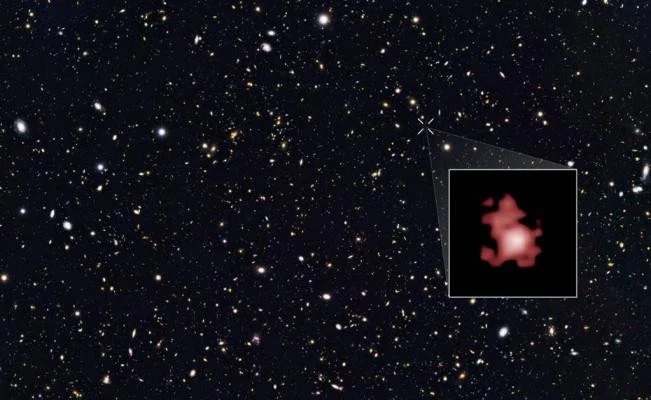The US Aerospace Agency’s Hubble Telescope set a new record when it discovered GN-z11, the most distant galaxy 13.4 billion light years from Earth.
According to the International Business Times, because the light from the galaxy takes billions of years to reach Hubble, this giant telescope “looks” at the first days of the universe.
“We have taken a huge step back in time, going beyond what we expected at Hubble. We can observe GN-z11 when the universe is only 3% of its age today,” the researcher said. . Pascal Oesch from Yale University, US, said. The discovery was published in the journal Astrophysics.
Theoretically, the universe was born after the Big Bang 13.8 billion light years ago, the distance between GN-z11 and Earth suggests that this galaxy could have formed after the Big Bang of about 400 million only. year.
This means that GN-z11 could be one of the first galaxies to form after the Big Bang.
The record for the most distant galaxy has changed several times over the past year. The Keck Observatory in Hawaii, United States, discovered the galaxy EGS-zs8-1 13.1 billion light years from Earth. The EGS-zs8-1 remained the oldest galaxy in the universe until researchers at the California Institute of Technology (Caltech) were able to observe the EGS8p7 galaxy from a distance of 13.2 billion years – light. With this new discovery, GN-z11 officially holds the record for the longest and oldest galaxy in the universe.
The researchers used Hubble’s wide-field camera 3 to determine the distance of the GN-z11.
To determine the distance between GN-z11 and Earth, the team looked for the degree of “redshift” of GN-z11. Redshift is a physical phenomenon in which light emitted by objects moving away from the viewer becomes redder.
In addition, the scientists also observed chemical markers, called emission lines and ultraviolet rays to estimate the distance to GN-z11.
“We looked at ultraviolet in particular because this is the region of the electromagnetic spectrum that we expect to detect chemical redshift markers,” said University of Tokyo professor Nobunari Kashikawa.
To resolve the high-level ultraviolet emissions, the Kashikawa team used a Keck I telescope in Hawaii with an advanced ground spectrophotometer mounted on MOSFIRE.
The distance of the GN-z11 is said to be close to the edge of the Hubble field of view. Galaxies of the same age or older will likely be detected by the successor version, the James Webb Space Telescope. “New research shows that the Webb Telescope will surely find many galaxies, from the youngest to the oldest,” Illingworth said.


